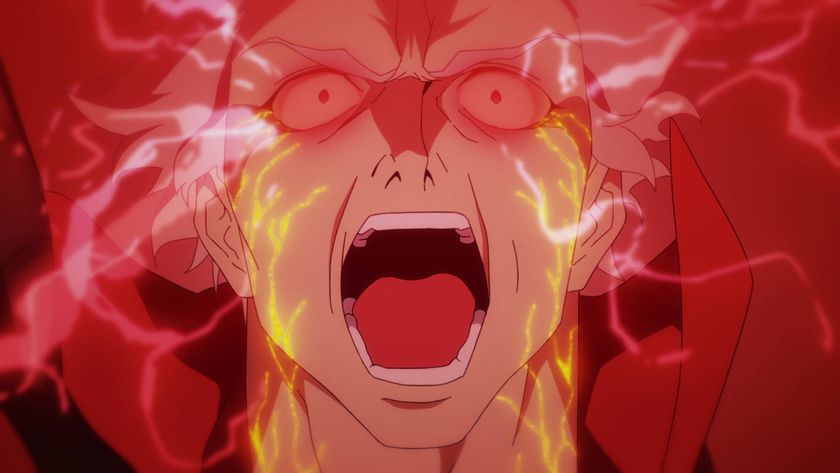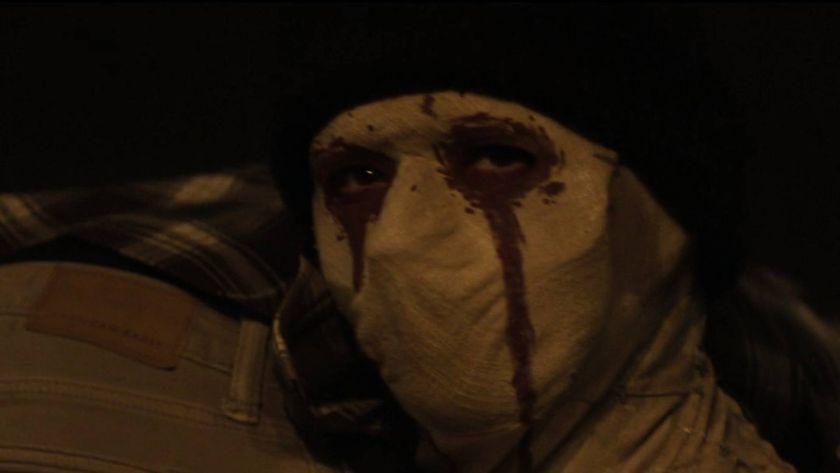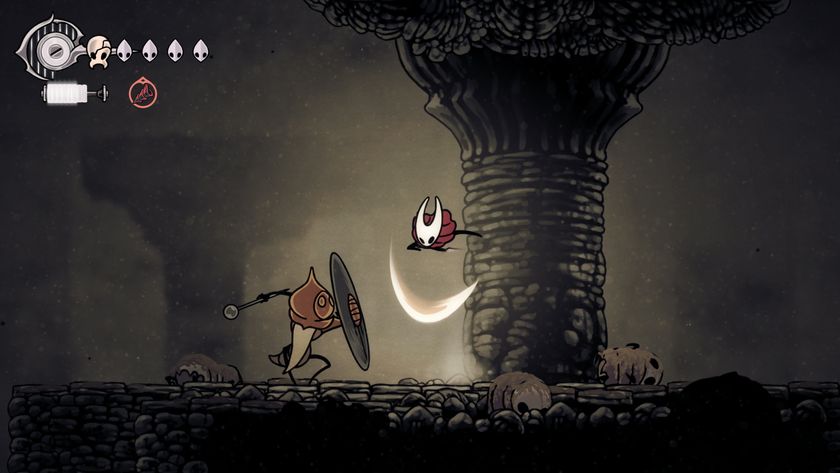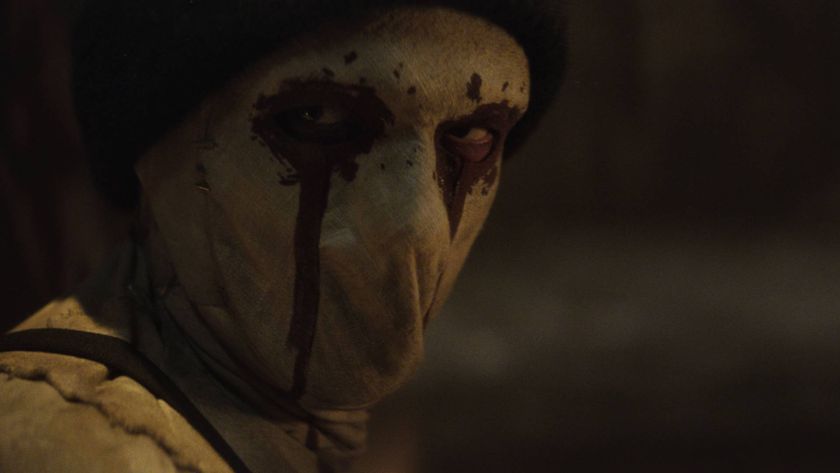CGI Visual FX: Great Leaps Forward
None
A lush, pictorial history of the significant moments in the development of digital FX in the movies
The Jurassic Park trilogy is released on Blu-ray for the first time later this month. It was a milestone in the development of digital FX, and still looks fantastic today. But while it forever changed the way films FX are produce, it wasn’t the first film to use CGI by far, and things have developed a long way since.
This featured is an updated and expanded version of one that appeared in an SFX Collector’s Edition in 2007, with new material and trivia provided by Steve Jarratt, editor of 3D World Magazine e, so he knows what he’s talking about. Enjoy.
1973
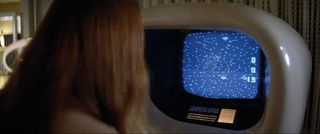
Soylent Green
The first commercial arcade video game, Computer Space , makes an appearance. The game, created by Nolan Bushnell and Ted Dabney and published by Nutting Associates, appeared in 1971, a year before Atari’s Pong. So technically, this is the first instance of CGI in a movie, though it’s kinda cheating…
1976
http://vimeo.com/16292363
Sign up to the SFX Newsletter
Get sneak previews, exclusive competitions and details of special events each month!
1977

Star Wars Episode IV: A New Hope
The animated wireframe graphic that appears in the Rebel Alliance’s briefing for the Death Star attack run is noteworthy for being the first substantial animated CG sequence (rather than the few fleeting seconds in previous movies). It was painstakingly hand-crafted by Larry Cuba, working in the Electronic Visualization Laboratory (EVL) at the University of Illinois.
http://www.youtube.com/watch?v=yMeSw00n3Ac&feature
1979
The Black Hole
The opening credit sequence, showing a wireframe representation of a black hole's gravity well, was, at the time, the longest computer-generated shot committed to film.
http://www.youtube.com/watch?v=cxWCH7PfieM
Alien
When the Nostromo enters the orbit of the planetoid Archeron (also referred to later as LV-426), the nav computers display a CG wireframe display of the ship’s flight path, and then of the rocky planet surface. The effect was created by Systems Simulation Ltd of London.
Into the ’80s on the next page…
.
.
1981
Looker
Cindy Fairmont (Susan Dey) becomes the first human CG character in a scene in which she is digitised (by what looks like a massive electricity sub station). Triple I again undertook the work of generating the wireframe meshes and fully-shaded polygonal models.
http://www.dailymotion.com/video/x5xubv_looker-topographic-scan-first-cgi-w_shortfilms
1982
Star Trek II: The Wrath of Khan
The Genesis Effect animation sequence features the first use of a fractal generated landscape together with a particle rendering system, which was used to produce the fire effect. It was produced by Pixar, which was then a branch of Lucasfilm dedicated to developing computer graphics. The sequence also required the development of a special high-speed camera.
http://www.youtube.com/watch?v=cCw_iW6-i88&feature=related
Tron
Tron marks the first extensive use of CG in a movie, although there are actually fewer than 20 minutes of purely digital imagery. The film also includes early attempts at facial animation in the shape of the Master Control Program. To complete the effects, Disney turned to four pioneering CG companies: Triple I, Magi Synthavision, Robert Abel & Associates and Digital Effects.
Where The Wild Things Are
Disney produced test footage, based on Maurice Sendak’s classic children’s novel, that combined traditional, hand-drawn character animation with computer generated backgrounds. It was directed by John Lasseter. When the project was shelved, due to budgetary issues Lasseter was fired. Shortly after he would join Lucasfilm’s Graphics Group and the rest is history. Another member of Wild Things team was Chris Drew, who went on to direct the Blue Sky Studios movies Ice Age and Robots .
1984
The Last Starfighter

This was the first film to use CGI for all its spaceship, planet and hi-tech hardware shots rather than the traditional model approach. This was the first time audiences were asked to accept that the CG was photorealistic and fully integrated with the live-action rather than computer graphics representing something abstract. The visual effects were created by Digital Productions using the legendary Cray X-MP supercomputer. The scene inside the Gunstar hangar bay was by far the most complex CG animation created to date.
2010: The Year We make Contact
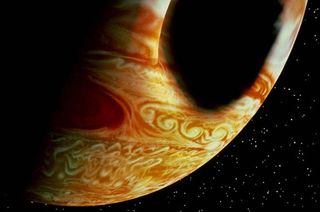
To recreate the flowing surface of the gas giant Jupiter, the team at Digital Productions used computational fluid dynamics in conjunction with CG.
The Adventures Of André And Wally B

A Lucasfilm short directed by John Lasseter (who’d joined from Disney) that saw the first use of motion blur and the principles of “squash and stretch” – a traditional technique in 2D animation for making characters appear to move with more fluidity – in CG animation. Although usually credited as a Pixar short, it was made under the auspices of The Graphics Group, a part of Lucasfilm’s Computer Division.
1985
The Black Cauldron
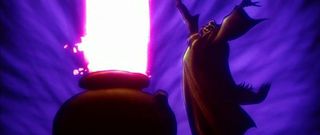
Disney’s hugely expensive ($25 million) and hugely loss-making ($21 million box-office) sorcery flick was the first animated movie to include CG elements, including digital fire, a boat, baubles and the cauldron. It was mainly used to describe solid forms, which are often difficult to draw correctly as the camera’s view changes.
Young Sherlock Holmes
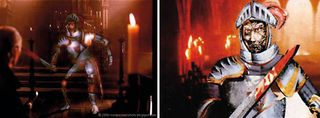
The first photorealistic CG character arrives in the form of a stained glass knight who grabs a whole 10 seconds of screen time. When we say “photorealistic”, you have to remember he was supposed to look like a stained glass knight, not a real human being. This was one of the final jobs done by Lucasfilm’s Graphics Group. The technology and a team of 45 staff was sold to Steve Jobs in 1986 for $5 million when George Lucas’s cash flow has stalled, following his 1983 divorce and the box-office flop, Howard The Duck . Pixar was sold to Disney 20 years later with an estimated value of $7.4 billion. Not one of George’s smarter business decisions…
1986
Labyrinth
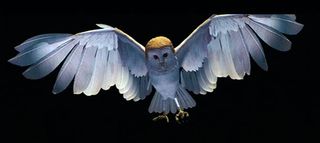
The owl that flaps around the opening provided Hollywood's first big screen attempt at creating a realistic CG animal. It was designed and animated by Larry Yaeger and Bill Kroyer of Digital Productions - and won them an award.
Basil: The Great Mouse Detective
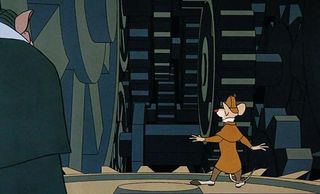
Computer animation was used to create the complex movement of the turning, interlocking cogs in the background of the chase scene inside Big Ben. The images were created as wireframes and output onto animation cels, which were then coloured by hand. The characters themselves were hand-drawn, making this the first full-length movie to put traditionally animated 2D characters against a CG background.
Flight of the Navigator
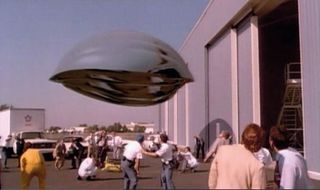
The alien spacecraft is enhanced with the first movie use of reflection mapping to make its surface look realistically metallic and shiny. The process uses images of the surrounding scenery, ether on the inside of a cube or sphere, which are then projected on to the surface of the model. The CG effect was created by Omnibus Computer Graphics, which had recently acquired Digital Productions and Robert Abel & Associates. However all three companies would shut up shop by 1987. The spaceship prop itself can still be seen on display at Disney World, Florida.
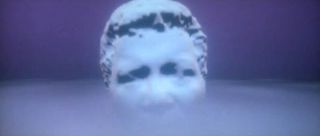
Star Trek IV: The Voyage Home
The (downright freaky) time travel sequence in this film showcases the first cinematic use of Cyberware software. Cyberware was a system that could scan people and objects before reproducing them as 3D objects within a computer. The filmmakers scanned in the heads of the original Trek stars, and then morphed from one to the other. The 30-second sequence took weeks to render using every available computer at ILM. It’s a rather odd inclusion, but still impressive given that CG effects were still in their infancy.
Luxo Jr
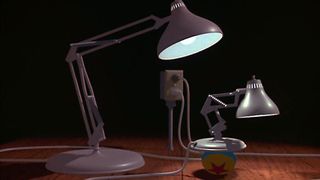
This now legendary Pixar short about two angle-poise lamps (still celebrated in the company’s ident) was the first CG animation to be nominated for an Oscar. It was also the first use of computer-generated shadows, made possible by the Pixar-developed Renderman software.
1987
Captain Power and the Soldiers of Fortune
The first TV series with CG characters and also J Michael Straczynski's biggest pre- Babylon 5 hit – he was the story editor and wrote most of the scripts. A toy line was also produced by Mattel, and during each episode there was a segment that included visual and audio material which interacted with the toys. Consequently, it was more popular with children than with their cash-strapped parents…
.
1988
Willow
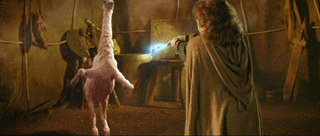
Another George Lucas film pioneers a new technique. Willow was the first film to feature a shapeshifting character, where Fin Raziel (Patricia Hayes) is transformed into several creatures, including an ostrich, a tiger and a goat. CG morphing had been used in the Star Trek IV time travel sequence but that had involved morphing between 3D polygonal objects (which actually contained the same number of vertices), rather than 2D images. It took Doug Smythe a year to write the software and output the effect.
Who Framed Roger Rabbit
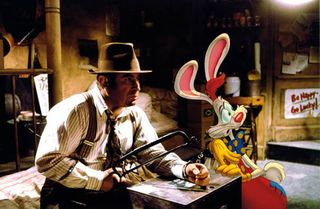
Computer animation was used to enhance the hand-drawn characters with sophisticated shading, lighting and shadows to make them blend into the real world more smoothly. Some scenes contain as many as 100 individual film elements and over 85,000 animation cells were created during production.
Tin Toy
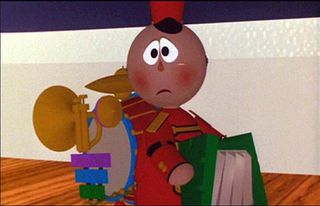
A Pixar short that was eventually developed into 1995 hit Toy Story , this was the first of the animation company’s films to win an Academy Award.
1989
Indiana Jones and the Last Crusade
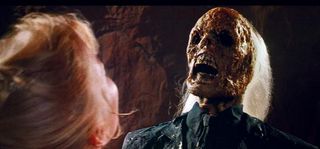
The first all-digital composite shot in a film was used to show Walter Donovan (Julian Glover) rapidly ageing to death. Glover was filmed in various stages of make-up. ILM then scanned these bits of films and morphed the elements together digitally. ILM also scanned in the film of the other live action and digitally combined the resulting morphs with the live action rather than arranging various film elements using a traditional optical printer.
The Abyss
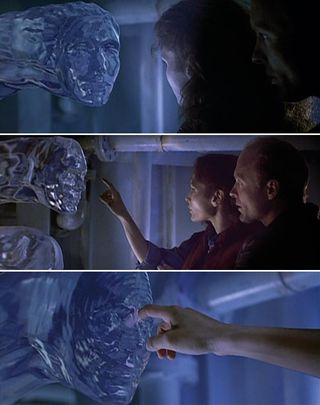
James Cameron’s stunning (yes, we like it!) undersea epic gave the movie world its first digital water effects. The showstopping effect was, of course, the alien “pseudopod” creature – a kind of watery, shapeshifting tentacle. The 75-seconds of pseudopod imagery took eight months of work to achieve and won an Oscar for best visual effects.
Things really begin to take off in the ’90s, on the next page…
.
.
1990
Total Recall
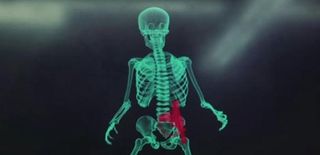
During the subway shoot-out, various characters move behind an X-ray screen to reveal moving CG skeletons. The movements were created using motion capture, which was the first use of such technology in a movie.
RoboCop 2
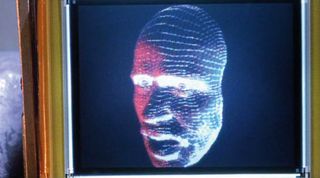
When the villain, Cain, merges with a robot, a CG version of his human face is seen on the robot's screen. This was the first cinematic use of real-time computer graphics. In other words, the face could be manipulated and recorded by an operator in real time using a custom interface (coined ‘digital puppetry’) rather than the movements having to be pre-programmed.
The Rescuers Down Under
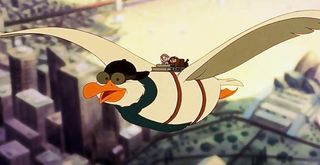
The first animated film to be coloured entirely using computers rather than ink on cels, sung Disney’s CAPS (Computer Animation Production System). It is also the first feature film where all of the elements were assembled and output entirely within the digital realm.
1991
Backdraft
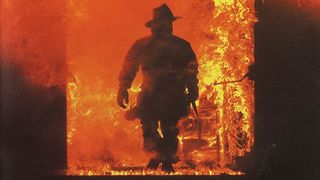
Ron Howard’s flame opera is notable for featuring the first photorealistic CG fire, created by ILM. Naturally occurring phenomena such as this are notoriously difficult and time-consuming to create.
Terminator 2: Judgment Day
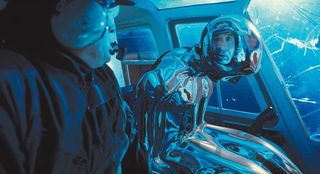
The liquid metal version of the T1000 is the first major CG character in a movie since the stained glass knight in Young Sherlock Holmes and he gets much more screen time. Well, three and a half minutes, which was a lot in those days. He was also the first CG character designed with realistic human movements. T2 was also the first film to make use of personal computers (rather than dedicated mainframes) to create some of its special effects.
Beauty and the Beast

Disney used digital technology to create a stunning CG backdrop for the ballroom scene when Beast sweeps Belle off her feet – and the digital camera sweeps the audience off theirs. It was no great breakthrough in technology, but it’s a breathtaking showcase sequence that stretches the fledgling techniques to their limits. Still glorious all these years on.
1992
Lawnmower Man
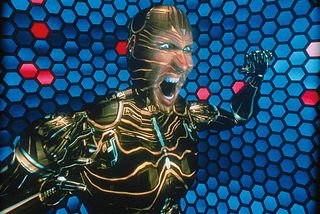
Famous for being the first film to visualise a computer-generated virtual reality in a total of eight minutes of kaleidoscopic digital effects, it also used an early version of motion capture to record actors' movements to control CG characters. It even had cybersex, which was a lot less titillating than it sounds (apparently you turn into a two-headed insect). The eight minutes of computer generated animation in Lawnmower Man cost $500,000 to produce.
Death Becomes Her
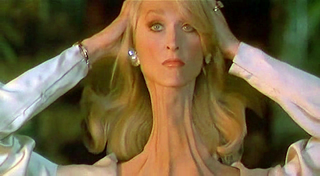
The first photoreal(ish) CG skin is seen on the twisted neck that joins Meryl Streep's back-facing head to her front-facing body.
1993
Quarxs
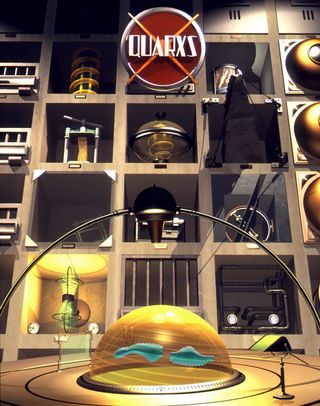
This little-known French series is the first entirely computer-animated TV show, predating Insektors and the Canadian show ReBoot , although each episode was only three minutes long. It was created between 1990 and 1993 but only 12 of the planned 100 shows were made. It was also notable for being produced in the high definition HDTV format.
Babylon 5
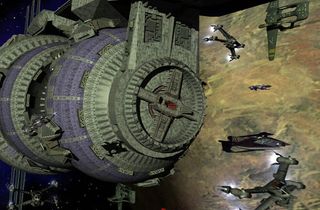
The first television series to use computer graphics as the primary technique for creating its visual effects, replacing physical models, miniatures and matte paintings. It was also the first to make use of computer generated virtual sets, with live action footage composited over the top.
Jurassic Park
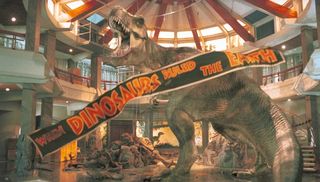
While the likes of Tron and Terminator 2 showed a glimpse of the potential of CG, Steven Spielberg’s dinoflick put it firmly on the map, and changed the art of visual effects forever. The first photorealistic computer generated creatures were majestic, and also spurred John Williams on to write his best score – no arguing. ILM had to custom-build a range of applications to make and animate the dinosaur models. A Dinosaur Input Device (DID) was also developed by Craig Hayes of Tippett Studios. Built just like a stop-motion armature, this rig translated movement into keyframes, enabling the stop-motion artists to transfer their well-honed skills into the digital realm. When Phil Tippett – the legendary stop-motion animator who was originally hired to do the VFX – saw the CG footage, he said “I’ve just become extinct,” a line Spielberg uses in the movie.
In the Line of Fire
A year before Forrest Gump , computers were used to take images of Clint Eastwood from Dirty Harry , give him a digital haircut, sideburn removal and lapel extension, then plonk him into newsreel footage of John F Kennedy arriving at Dallas airport on the day of his assassination in 1963. Another scene has real footage of a Bill Clinton rally with Clinton’s face digitally removed and replaced with that of a ‘generic’ president.
1994
Insektors
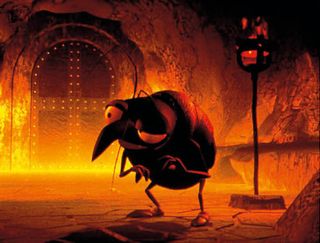
Insektors is cited as being the first “full-length” computer animated cartoon TV series, beating ReBoot to air by a few months. Although at just 12 minutes per episode, some would argue that ReBoot still takes that accolade. Another French production, Insektors was created by Studio Fantome and ran for two, 26-episode series.
ReBoot

This Canadian production ran from 1994 to 2001, with four, 27-episode series. Each show was 23 minutes long, so was a considerably larger undertaking than Quarxs or I sectors . ReBoot was produced by Mainframe Entertainment (now Rainmaker Entertainment), which would go on to do Beast Wars , the Transformers spin-off.
The Crow
Star Brandon Lee’s face was digitally composited onto a body-double so unfinished scenes could be completed after his death in a freak shooting accident part-way through filming.
The Flintstones
The sabre-tooth tiger Kitty features the first digitally-created fur seen in the movies. Sadly, this is the only highlight in an otherwise ill-conceived slice of cinematic dross.
Forrest Gump
Director Robert Zemeckis’ syrupy message (that being stupid is okay and that you shouldn’t bother putting any effort into your life because great things will happen anyway) is nevertheless a CG marvel, using digital techniques in all sorts of ingenious, but largely invisible ways. Rather than creating obvious effects, CG technology is used to place Gump into various well-known historical situations, to remove Gary Sinise’s legs and to fake a high-speed game of table tennis (the ball is digital).
Radioland Murders
In order to bring his pet project to the screen within a small budget, George Lucas supplemented live action by a range of virtual CG sets and digital matte paintings, one of the first movies to do so. However, the high-techery didn’t prevent it being another Lucas flop, which failed to recoup it’s meagre $15 million investment.
With the second half of the ’90s – on the next page – you can’t escape CGI…
.
.
1995
Casper
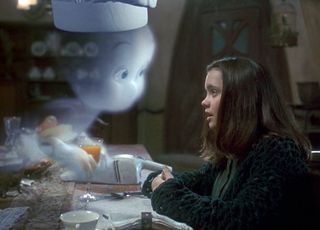
The friendly ghost becomes the first CG lead character in a movie, and the first to react realistically with other cast members. The semi-transparent ghoul is on screen for roughly 40 minutes.
Batman Forever/Judge Dredd
Both comic-book film adaptations started the trend of using digital stunt doubles for intense action scenes. A digital Batman was created by Pacific Data Images as a stand-in for the more extreme sequences in Joel Schumacher’s fun bat-flick.
Waterworld
The troubled progeny of the two Kevins (Costner and Reynolds) features the first photorealistic CG water effects. Specifically, shots on board the huge “smokers” oil tanker, where the surrounding ocean is all created using software from Areté Associates.
Babe
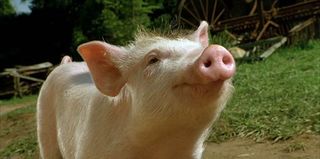
Digital trickery was used to manipulate real animals’ mouths so it looks like they’re talking. The animal’s mouths were modelled in 3D and then animated to the actor’s lines. These were then tracked and composited on to the live action footage. The work earned Rhythm & Hues an Oscar for best visual effects,
Toy Story
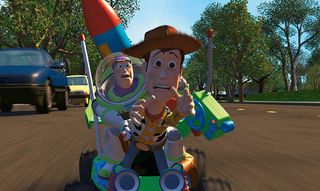
Pixar arrives big time, with the first ever entirely CG animated movie. The move was made with a budget of $30 million and took a team of just 110 people, including 27 animators. Rendering the 110,064 frames of animation was achieved using 110 Sun workstations, taking 800,000 machine hours. By comparison, today Pixar has two massive, dedicated renderfarms each containing hundreds of multi-core servers running 24 hours a day.
Jumanji

This represented another significant leap in the development of realistic CG fur – this time on some spooky monkeys and a pretty decent-looking lion. The film contains a large number of supposedly photoreal animals of varying quality. There’s also a CG stampede that, oddly, looks less convincing than the dinosaur effects in Jurassic Park two years earlier.
1996
Dragonheart
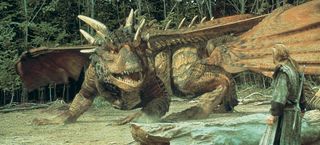
ILM employed its bespoke CARIcature lip-synching software to bring to life Draco, the talking dragon. The big leap forward here was the range of Draco’s facial animation: the dragon’s voice was provided by Sean Connery and over 200 reference photos were taken of him with different facial expressions. These were then used to help animate Draco, give him character and enhance his virtual “performance”. With lengthy screen times (up to 30 seconds in some scenes), and Draco being main focal point in the shot, the CG had to stand up to audience scrutiny, which makes ILM’s work on the film (including some very complex rotoscoping) all the more impressive.
Twister
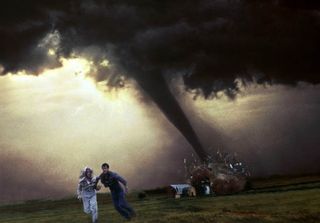
ILM employed Wavefront’s Dynamation particle system to bring Jan de Bont’s tornado-chasing spectacular to the big screen – and earned the VFX facility an Oscar nomination. The interactive dynamics software enabled artists to create fully controllable, rotating funnels of particles combined with a special purpose particle renderer. To complete the look, ILM added 2D and 3D clouds to make the sunny live action footage appear stormy.
1997
The Fifth Element

The sprawling cityscapes of New York, created by Digital Domain, seamlessly blend huge 1/24-scale model buildings with digital sets and physical model vehicles with their CG counterparts. One shot consists of 80 elements – doubling the effects facility’s previous record. Under the supervision of Mark Stetson, Digital Domain populated the city with dense air traffic, with a flying police car chase taking place as full CG, after Leeloo plummets into Corben Dallas’ taxi. Digital Domain created 225 VFX shots, which were rendered with Pixar’s RenderMan software.
Star Wars Special Editions
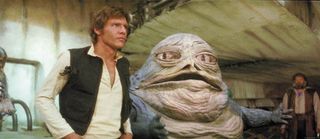
George Lucas used CG to add or amend over 350 shots to his original trilogy, creating a CG Jabba the Hutt for Episode IV and expanding the celebration scenes in Episode VI (though allegedly, according to George himself, the Gungan added to the Jedi finale is not Jar Jar Binks). Fans were horrified when digital trickery made Greedo shoot first in the cantina scene and when it didn’t do anything to stop Darth Vader looking like a potato when his helmet was removed.
Contact
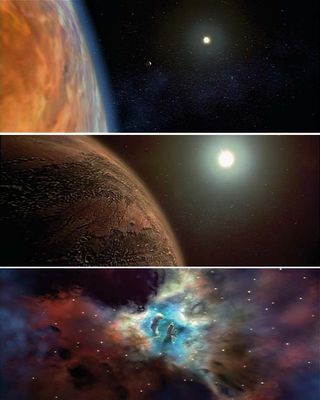
The film opens with what was then the longest ever continuous CG FX shot ever (outside of a full-length animated CG movie that is). Starting with an image of the Earth, the virtual camera pulls back through the solar system and then through the galaxy and into the outer reaches of the universe, until the stars finally vanish into the blackness of the pupil in the eye of a young girl. The girl's eyes were digitally re-coloured to make them match those of actress Jodie Foster, who plays the same character later on, as an adult.
Spawn
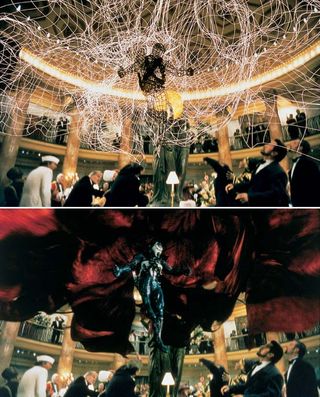
The title character’s flowing cape is an impressive CG creation (about the only thing in the movie that is impressive).
Starship Troopers

The first movie to feature a large scale CG-enhanced military battle – in this case between futuristic soldiers and giant, alien insects. By this time stop-motion animator Phil Tippet had embraced the art of CG creatures and was fast becoming a leading proponent, bringing his knowledge of form and movement to the digital realm.
.
Titanic
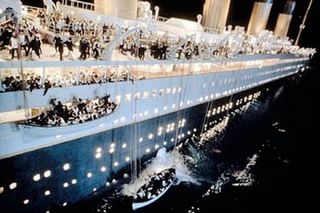
The most lucrative film ever made (until kicked into touch by Avatar 12 years later) was also, at the time of its release, the most expensive ever made. Director James Cameron spent the lion’s share of the budget on CG effects and the film cost more to make than the Titanic itself. Motion-captured digital passengers walk the decks of the ship; the engine room is part CG; the sinking scenes are enhanced by computer-generated effects and the realism of CG water took another leap forward.
1998
Godzilla
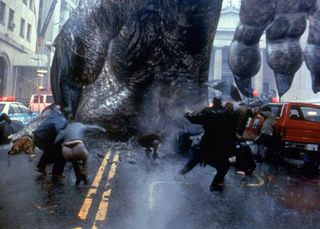
The stunning and complex CG work by Centropolis Effects (the film features a total of 400 effects shots, with 235 of them featuring a full-CG Godzilla) still can’t redeem Roland Emmerich’s monster movie. Despite some truly impressive scenes of the giant lizard rampaging through a rainy New York (the rain effects actually made the VFX work harder, not easier), and a flawless fly-over of a beached Panamanian ship – yep, the vessel is entirely CG – the film remains a bit of a damp squib.
What Dreams May Come
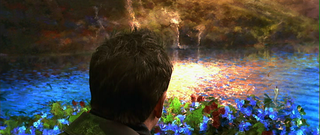
Scenes of a shifting, painterly afterlife was the result of a collaboration between a number of VFX houses, including Mass.Illusions, Digital Domain, Pacific Ocean Post, Giant Killer Robots, Mobility and Shadowcaster. The beautifully colourful backdrops, that resemble moving impressionist paintings, were created by the use of LIDAR (Light Detection and Ranging) to scan an entire location and recreate it as a “point cloud” in the computer. A process called optical flow was then used to generate the moving scenery. This groundbreaking work earned the movie an Oscar for best visual effects.
Antz
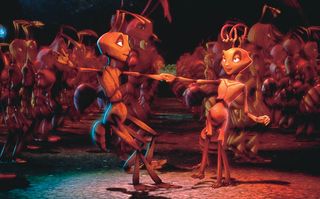
Dreamworks manages to release the second completely CG-animated movie mere weeks before Pixar’s own insect-themed digital ’toon, A Bug’s Life . Antz features a scene with over 10,000 individually-animated characters, and is the first CG animated feature film to include CG water.
Pleasantville
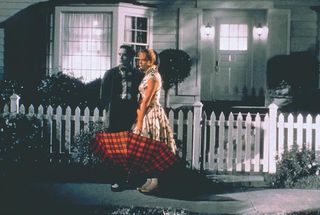
This film boasted the most digital effects shots ever at the time - over 1,700. To be fair, the CG work was just used to combine colour and black and white images, so it wasn’t exactly groundbreaking stuff. Great film, though.
The Prince of Egypt
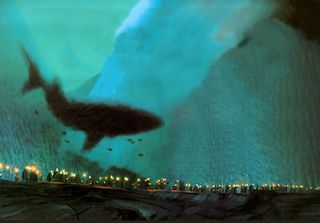
At $60 million, this was, at the time, the most expensive animated film ever made. Its costly CG effects include a burning bush and the parting of the Red Sea. It also introduced a style of CG shot that has now become a cliché in itself – the camera panning up to reveal a vast city or empire.
Mighty Joe Young
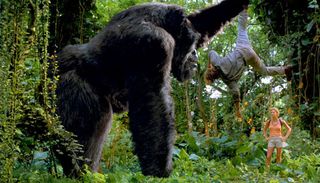
This remake of the 1949 original made another advance in the development of CG hair, fur and feathers, and saw VFX facility Dream Quest team up with ILM. Some shots of the gorilla were CG, while others brought him to life using a Rick Baker-developed robotic ape, or an actor in a suit and forced perspective techniques, to fake the ape’s scale.
1999
The Matrix

The reality-bending Keanu Reeves-starrer turned “bullet time” – slow-mo combined with impossible camera movements – into the effect that every commercial and pop video maker wanted to use. The basic technique is not actually computer-based (it involves a line or circle of still cameras taking still images in rapid succession), but The Matrix employed CG to enhance the effect in stunning ways. By the time the sequels were made, the FX guys had developed a surrogate bullet-time technique that was achieved digitally. Roughly 20 per cent of the original film is made up of special effects, including photoreal digital versions of Neo and Agent Smith, which largely went unnoticed.
The Mummy
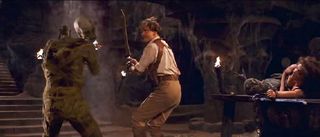
Stephen Sommers’ rip-roaring horror yarn, tasked ILM with creating all manner of supernatural effects, from evil dust storms and swarms of locust to the eponymous star himself. ILM created an underlying skeleton and muscle system in Maya, with dozens of animatable controls; movement was driven partly by motion capture and partly by keyframe animation. For the stages of regeneration where you can see through his bones and chest cavity, the creature was layered in texture maps with areas of transparency and chunks of displaced geometry, pushing ILM’s pipeline to the limit. In later scenes, VFX supervisor John Berton added markers to Arnold Vosloo’s face, so he could painstakingly track in digital prosthetics, showing his jaw and teeth behind the shredded skin.
Star Wars Episode I: The Phantom Menace

The Phantom Menace was, at the time, the biggest visual effects project ever undertaken. The film required 35,000 storyboards and 95% of the frames have digital elements. It featured around 2,000 digital FX shots and at least 66 different digital characters, including the first all-CG lead character (the risible Jar-Jar Binks). The 320-shot Podrace, which takes place on the barren landscape of Tatooine, required that ILM spend a year in R&D, working on physics systems for the destruction of the Podracers, plus an Adaptive Terrain Generator, employing a level-of-detail system, just so that its computers could hold the mesh data in memory. Whether you like it or not, Episode I fundamentally changed the way movies were made – pretty much as Episode IV did back in 1977.
Fight Club
A technique called photogrammetry was used to make virtual sets from photos taken of the real sets, which allowed for photorealistic high speed, virtual camera shots that would be impossible to achieve in reality. One of the film’s earliest sequences is made up of over 100 individual still photographs composited together.
Geri’s Game
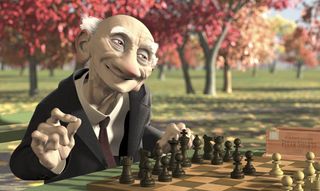
This little-know Pixar short is notable for its pioneering use of “subdivision surfaces”. This is a technique that uses polygon cages to generate an underlying high-resolution surface that is very smooth and can be displaced at rendertime. Subdivision surfaces are ideal for character animation, and by applying a displacement map, can be imbued with fine surface detail that would be impossible to model by hand – the weave of cloth, for example, or the pores in skin.
A new millennium, and a new standard in digital effects, on the next page…
.
.
2000
Gladiator
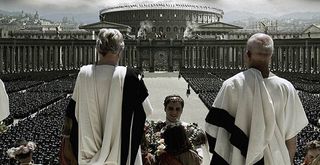
For recreations of Rome and the Coliseum, Ridley Scott turned to Mill Film for a number of digital matte paintings and set extensions. For the 360-degree camera sweep around the amphitheatre, only a third of the set was physically constructed, with the rest CG. To create the remainder of the theatre, the team used blueprints from set designs and texture references from the live action shoot.
The Perfect Storm
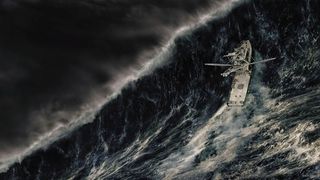
Wolfgang Petersen’s film took CG water to the next level, with its depiction of stormy seas, and an end sequence featuring a huge 100ft wave that finally capsizes the fishing boat. In total, the film featured 90 completely CG shots, all of which include water elements, A further 220 shots required CG seas to be composited with live-action footage shot on a huge, moveable fishing boat set. A custom fluid dynamics system was developed to create a realistic ocean, with various other shaders and plug-ins written in-house.
Hollow Man
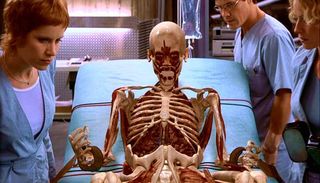
The film boasts some 400 effects, from relatively simply tracking and bluescreen shots where Bacon’s latex mask is seen to be empty, through to sophisticated effects where the invisible man’s body is highlighted only by water or smoke. But the standout VFX scenes are those showing the transformation from solid body to invisibility, revealing layers of skin, organs and bone, gradually disappearing. Sony Pictures Imageworks’ custom volume rendering system enabled the VFX crew to replicate an entire human in intricate detail, where all the veins and organs move and react properly to the movement of the character.
O Brother, Where Art Thou?

The first feature film to be entirely digitally colour-corrected, giving the movie a washed-out, sepia-tinted tone.
2001
Shrek
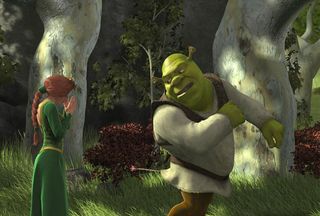
The full-length CG animation becomes the first film to win the inaugural Oscar for Best Animated Feature, introduced that year.
A.I. Artificial Intelligence
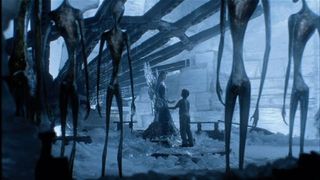
Spielberg’s tour de force of CG and digital VFX is crammed with beautiful effects, such as the skeletal mecha with realistic facial facades, a neon-lit Rouge city and scenes of a flooded New York. But it also features an unexpected coda when, we are swept along on a journey through an ice-bound Manhattan, which is being excavated from a vast glacier. The opening 60 seconds of the flight across the ice field is actually footage from the movie Firefox , matchmoved by hand with simple CG buildings, but the rest of the trench flight is fully CG.
Final Fantasy: The Spirits Within
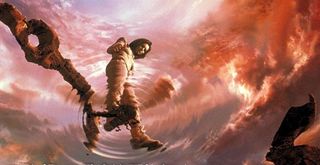
Recognised as the first completely CG photorealistic movie, The Spirits Within had much to commend it: the production design and action sequences were tremendous. But although huge advances were made in the depiction of human skin, hair and movements (characters had moles, veins, wrinkles and so on), they still weren't quite convincing, remaining steadfastly on the wrong side of the uncanny valley. The film took four years to make, but recouped just over half of its £135 million budget and resulted in the closure of Square Pictures.
Jimmy Neutron: Boy Genius
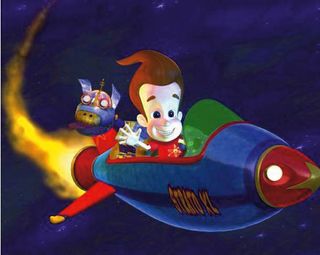
The first feature-length CG film created using off-the-shelf hardware and software that anybody could buy commercially – primarily NewTek’s LightWave 3D and messiah:studio.
The Lord of the Rings: The Fellowship of the Ring
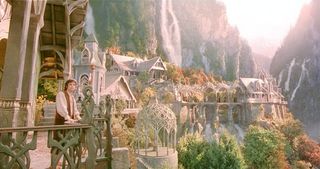
Mammoth CG battle sequences became all the rage and Weta Digital used every CG trick in he book to help bring Tolkien’s Middle-earth to life. But the truly groundbreaking effects would have to wait for the sequels…
2002
Spider-Man
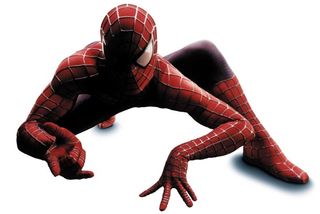
In the final battle between Spider-Man and the Green Goblin, CGI was used to change the colour of the blood pouring from Spider-Man's mouth into spit. This was to ensure a PG rating. The film is full of breathtaking effects, but somehow the CG Spidey never quite overcomes looking a bit too cartoony (which is a shame, as the film boasts the most extensive use of CG body doubles yet). Appearances of the Twin Towers in the original cut were digitally removed after the events of 9/11.
Star Wars Episode II: The Attack of the Clones
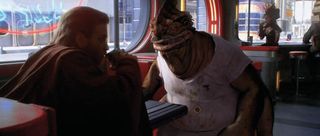
The first feature film completely shot and exhibited in digital HD video.
ET: The Extra-Terrestrial Special Edition
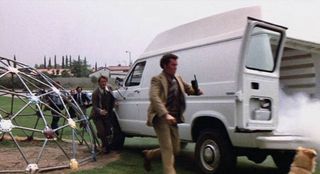
As well as allowing Spielberg to create a CG ET in some scenes, giving him extra flexibility and movement, the director also digitally removed FBI agents’ guns and replaced them with walkie-talkies (above). The CG updating is something Spielberg now regards as unnecessary (and he actively encourages people to watch the original) but the message doesn’t seem to have filtered through to his mate George…
Minority Report
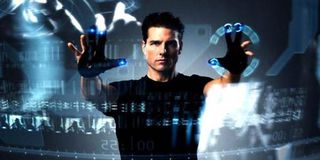
With the exception of the thrilling vertical car chase sequence, much of the CG in Minority Report is quite subtle. However it is notable for the realistic portrayal of its interactive holographic displays, which redefined the idea of the virtual computer interface.
Treasure Planet
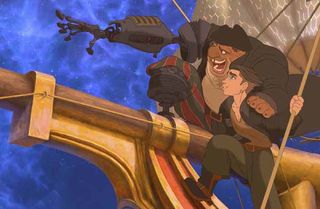
This $140,000 Disney animation comprised a mixture of traditional hand-drawn animation with CG ships and props – such as John Silver’s cyborg hand. It’s the first film to debut in both standard and IMAX formats on the same day. However this didn’t prevent it being a box-office failure.
The Lord of the Rings: The Two Towers
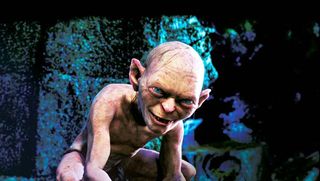
Gollum was created using the most complex motion capture system yet, reproducing actor Andy Sirkis’ movements and expressions to give the character a much more believable acting performance. Indeed, many people called for Sirkis to be nominated for a best supporting actor award, but it was not to be. The film was also the first to use MASSIVE (Multiple Agent Simulation System in Virtual Environment), a program developed by software engineer Stephen Regelous for Weta. The software creates thousands of individual artificially intelligent “agents” that operate autonomously – avoiding objects, fighting, or in one instance even surveying the ensuing carnage and legging it. Motion capture sequences were linked to each agent, which drove the animation of the hordes of CG Uruk-hai.
2003
Finding Nemo

Regarded by many as Pixar’s finest hour, Finding Nemo was a box-office smash, raking in $868 million worldwide, and bagging an Oscar for Best Animated Feature. The beautiful depiction of the ocean world, from the coral reef to the vast ocean seabed to the Australian coast still makes impressive viewing.
The Matrix Reloaded/Revolutions

Reloaded introduced Universal Capture (or U-Capture) for the spectacular fight scene in which Neo has to fight hundreds of Agent Smith clones. U-Capture (which is a bit like motion capture but without the need for the actor to wear a motion capture suit) involved filming actor Hugo Weaving (Smith) with five digital cameras from various angles, feeding the images into a computer, and then getting the computer to work out what he would look like from any angle in any position.
Hulk

ILM’s work on the Ang Lee’s superhero flick raised the bar for the quality of its central CG character, which needed to deliver an emotional performance in close-up, and also interact believably with an outdoor environment. Using both Maya and Softimage 3.9, ILM built complex animation rigs incorporating multiple texture layers, sub-surface scattering, and skin that slides realistically over the underlying muscles. And this was back when ILM only had 1,500-processor renderfarm, remember. You might argue the sequel is a better film (we wouldn’t), but this Hulk certainly looked the part.
The Lord of the Rings: The Return of the King

The final chapter in the Rings saga built on the work achieved in its predecessors, raising the stakes in the amount and scale of the CG work, culminating in the huge Battle for Pelennor Fields.
2004
The Day After Tomorrow
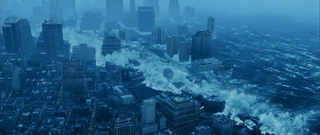
50,000 scanned photos of a 13-block area of New York were used to create a 3D, photorealistic model of the Big Apple so it could be destroyed by a digital tsunami and then frozen. The film also featured the longest ever CG flyover shot for the opening ice-shelf scene.
Spider-Man 2
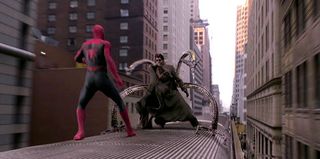
Around $54 million of the film’s budget was spent on digital effects, including a sensational battle between Spider-Man and Doctor Octopus on a moving train. Sony Pictures Imageworks was responsible for the 218 shots that feature the mechanical arms, built in Maya. To convey the limbs’ power, the team created custom fracturing algorithms which generated controllable chunks of masonry wherever the tentacles struck. They still couldn’t get the CG Spidey to look any more realistic, though.
Sky Captain and the World of Tomorrow
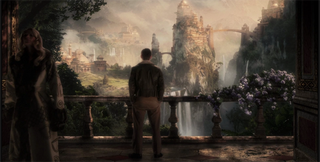
To bring his personal vision to the big screen, writer/director Kerry Conran decided to make the film independently, with his own money and funding from Aurelio De Laurentiis. To keep the budget under control it was largely shot on bluescreen stages with the sets, backdrops and action sequences being added digitally. The film features some 2,000 VFX shots which were completed in just one year – including a posthumous performance by Laurence Olivier, created digitally using BBC archival footage. Live action was shot in just 26 days using a Sony HD video camera, and then composited/edited on standard Apple Macs using Adobe After Effects and Final Cut Pro. Despite flopping at the box office, Sky Captain showed that large-scale blockbusters were becoming easier and faster to create using advances in affordable CG.
The Polar Express
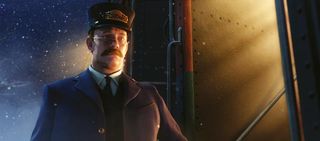
This was the first CG animated film to use motion capture (here renamed performance capture) for every single character. The big step forward here was that multiple actors could be filmed at once using a number of digital cameras placed around them to give 360-degree coverage. The film was also released in IMAX 3D on the same day as the standard cinema version. Despite the spooky dead-eyed characters, the film has garnered a cult following.
The Incredibles
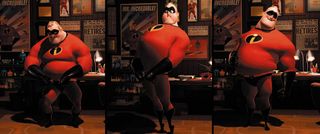
This was the first Pixar film to star several human characters in main roles. It also won two Oscars, for Best Animated Feature and Best sound Editing.
2005
Star Wars Episode III: Revenge of the Sith
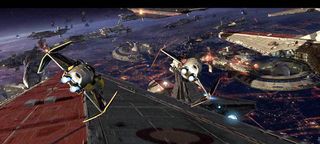
The Star Wars saga finally reaches it climax, with another CG-packed extravaganza. On release it held the world record for the number of effects shots, at 1,252. A record it held for precisely seven months until Peter Jackson’s King Kong came out later that year. Again, the film was intensively VFX-laden, kicking off with an unbroken 75-second tracking shot as Obi-Wan and Anakin hurtle through the melee of Republic destroyers and Confederate navy warships. Set high above the city world of Coruscant in the upper atmosphere, supervisor John Knoll explained that the location gave the effects team the chance to employ fire and smoke trails that would look out of place in the vacuum of space.
War of the Worlds
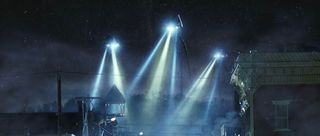
Spielberg re-imagining of the HG Wells story is included here, mainly because of the fantastic photoreal quality of the CG tripods and the grim efficiency of the human vapourisation effect. That is all.
The Chronicles of Narnia: The Lion, the Witch and the Wardrobe
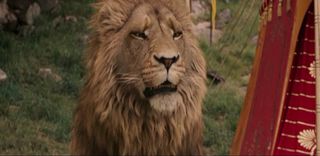
The first in the Narnia trilogy is notable for its realistic portrayal of a variety of half-human, half-animal creatures, plus an effective all-CG lion. The final 20-minute battle between Aslan and the White Witch, is prefaced by a stunning head-on charge in slow motion and which features over 40 distinct different CG characters. Rhythm & Hues used the MASSIVE software to create tens of thousands of creatures, taking six to eight weeks to shoot with each frame needing nearly ten hours to render. ILM utilised Maya for the numerous character rigs and Maya’s Hair & Fur to create hundreds of horse tails and Minotaurs.
King Kong
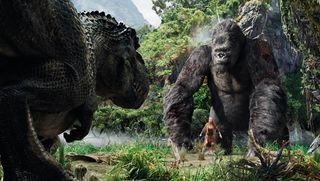
Peter Jackson once again called upon Andy Sirkis to perform motion capture duties, this time for the film’s eponymous ape. The movie boasts some stunning CG work, but is let down by overcomplicated camera work and some occasionally dodgy compositing, especially during the overlong dinosaur stampede. A new digital sculpting tool called Mudbox was developed especially for the movie, and is now available to buy from Autodesk. The more than 3,200 final shots in the film were culled from 3 million feet of live-action footage and 2,510 visual effects shots. It held the record for the largest number of VFX shots in film until dethroned by Avatar in 2009.
And the final page brings us bang up to date…
.
.
2006
Happy Feet
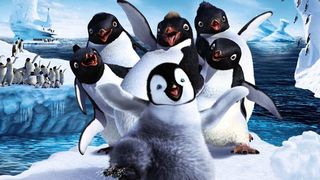
Virtuoso tap dancer Savion Glover provided the motion capture dancing for the film’s hot-shoe hero. In a fairly quiet year for blockbusters, it was one of several CG animated movies to perform well at the box office, alongside Cars , Ice Age: The Meltdown and Over the Hedge .
Superman Returns
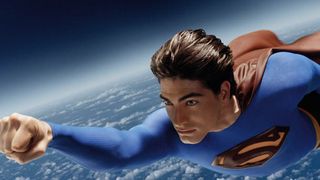
Finally, an almost convincing CG body double. The FX team created a digital Superman to take the place of Brandon Routh in some shots. Even more impressively, computers were used to take archive footage of Marlon Brando as Superman’s dad and manipulate his facial expressions and mouth so that he could “speak” new dialogue. In a largely action-free movie, the standout sequence occurs when Superman has to save a tumbling airliner. This all-digital scene from Sony Pictures Imageworks involved a sky dome and a ground plane, plus fully volumetric clouds which could be flown-through. The intricately detailed CG plane could be realistically broken apart, seam by seam, showing the internal support structures within. Extensive smoke plumes and explosions complete the impressive effect.
Pirates of the Caribbean: Dead Man’s Chest

The previous Pirates movie had featured CG to a large extent, but Davy Jones, with his beard of writhing tentacles, sets new standards in photorealistic CG creatures. ILM used a process called sub-surface scattering – which replicates the way light bounces around inside waxy materials – to give him semi-translucent skin.
2007
Sunshine

Danny Boyle’s quirky SF thriller sees the Icarus II sent on a mission to reignite our dying sun. The vast ship – an entirely CG-creation – comprises 75 different modules and is protected from the son’s power by a mile-wide heat shield covered with 130,000 individual gold-plated panels. Designed as if constructed in Earth orbit, the model took six months to build, finally topping out at 1.9GB of geometry data, plus 200GB of texture data. It also features 432 lights to self-illuminate the structure hidden in darkness behind the vast heat shield. The sun’s swirling surface is all CG, utilising procedural texturing, particle systems and layers of matte paintings, some as large as 10K (10,000 pixels wide).
Spider-Man 3
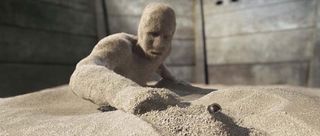
FX supervisor Scott Stokdyk led a team of 200 programmers at Sony Pictures Imageworks to produce 900 visual effects shots for this film. Three years of research went into the visualisation of the Sandman’s powers, as the animators tried to learn everything they needed to know about how particulate matter moves. Whatever else you think of the film, the 2,700-frame three-minute effects sequence (including one continuous shot that lasts over a minute and a half) showing the birth of the Sandman is digital poetry.
Transformers
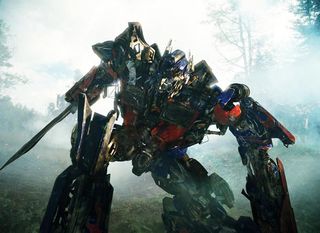
Some of the most detailed computer animations ever seen in a film were produced for director Michael Bay’s alien robots. The CG team use 60,217 virtual vehicle parts and over 12.5 million polygons to construct the 14 shapeshifting automatons. The movements involved were so complex that even a simple action, such as a Transformer moving one of its wrists, required 17 different mechanisms to be animated. “The visual effects were so complex it took a staggering 38 hours for ILM to render one frame of movement,” said Bay. “That's unheard of in this industry.”
Beowulf
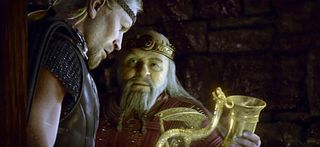
Director Robert Zemeckis’ second completely motion-captured movie is based on an epic Old English poem. Again the $150,000 film was released in IMAX 3D, boasting the biggest roll-out of any 3D movie, opening in 1,000 3D cinemas and 90 IMAX theatres. Despite the state-of-the-art performance capture system, and photoreal texturing and lighting, the characters still largely fall foul of the uncanny valley, and the film’s strong points are the epic action scenes.
300
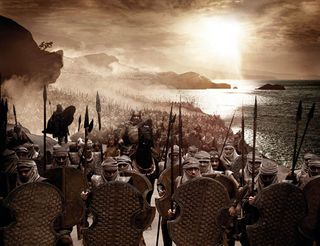
This retelling of Frank Miller's graphic version of the Battle of Thermopylae isn’t a groundbreaking film technologically, but deserves a mention because of the sheer artistry of its visuals. Taking its cue from Sin City (2005, which was co-directed by Miller and was based on another of his graphic novels) and Sky Captain (2004), its actors were filmed against blue screen on sparse sets. The effects team then used CG to create highly stylised, deeply atmospheric backdrops. But whereas Sin City was clearly aiming to be a comic strip brought to life, 300 has a unique and haunting visual quality.
2008
Cloverfield
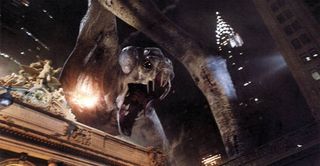
Cloverfield is a fine example of how to successfully mix live action with quality CG, such as when the Statue of Liberty’s head is catapulted down the road by an unknown and unseen force. Visible for several seconds in full frame, the head itself had to be built as an extremely high detailed 3D model with precise texturing. The use of camera tracking software (also known as match-moving), which uses the movement of elements in the live action plate to figure out how the camera is moving, enables the FX technicians to track CG objects into even the most complex, hand-held scenes.
Doctor Who

The first TV show anywhere in the world to use the MASSIVE crowd-generation system, which was originally developed for the battle sequences in Lord of the Rings . The software was used to produce the Adipose crowd scenes in “Partners in Crime”, with only one or two of the critters animated by hand and the rest more or less thinking for themselves. It was also used for the Dalek attack on the Valiant in “The Stolen Earth”.
Iron Man

Jon Favreau’s popular comic book movie features some tremendous CG work, especially the Iron Man suits which are flawlessly integrated with their live action counterparts (often in the same shot). The initial “Scrapheap Challenge” Iron Man creation is impressive enough (created by The Embassy Visual Effects largely with LightWave 3D), but the real “wow” moment is the 60-second sequence that pieces together the fully functional armour for the first time. ILM developed a range of shaders that mimic the precise properties of different metal finishes, so that the CG suit replicated the practical one precisely. The CG version is so seamlessly blended and photoreal that it’s practically impossible to tell the difference between them. Further improvements to the metallic shaders were made for the sequel.
Indiana Jones and the Kingdom of the Crystal Skull
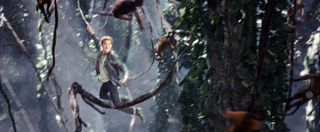
Despite comments from Lucas and Spielberg that they wanted to take the Indie franchise back to its realistic, more physical roots, this ill-advised and disappointing reboot is riddled with extravagant and unbelievable CG effects. A stern warning that VFX alone do not a good movie make.
WALL-E
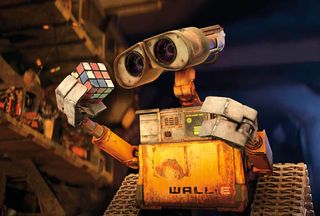
Pixar’s release featured a sweet worker robot in a desolate wasteland, which the filmmakers lit and shot like a live-action film, drawing on the experience of British cinematographer Roger Deakins and VFX expert Denis Muren. The complex storyline required 125,000 storyboards, and also contains a small amount of live-action in the form of an old recording of Hello, Dolly ! – a first for Pixar.
The Curious Case Of Benjamin Button

Generally recognised as the first film to recreate a genuinely photoreal human face using computer graphics, US FX house Digital Domain had to push the state of the art in facial capture and in the quality and detail of the CG model.
2009
Monsters Versus Aliens
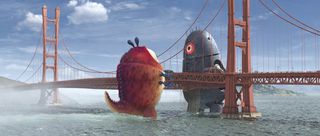
A Dreamworks animated spoof of ’50s B-movies, starring Seth Rogen and Reese Witherspoon. It was the first film to be created in stereo 3D (for viewing with glasses), rather than filmed in 2D and have the effect added in post-production. Of course, with fully CG-animate movies, this is a much easier process, as you simply add a second computer camera and render out two viewpoints. Because of the precision of computer animation, the images are always perfectly aligned and need very little post-processing, unlike live-action 3D, where shooting with two, supposedly identical cameras is fraught with issues and imperfections.
Avatar
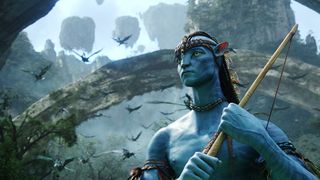
Well, this is it: the big one. James Cameron’s magnum opus represents a turning point for CG visual effects, performance capture, digital movie making and stereoscopic 3D. Four years in the making, it drew on the combined talents of both Weta Digital and ILM, which needed to be brought in when Weta was becoming swamped with the workload. The film pushed the overall quality level of CG, especially in the portrayal of the photoreal Na’vi characters, and also the lush, bustling world of Pandora. But it also set a new precedent in terms of virtual filmmaking, providing Cameron with a live feedback of the CG scene as a low-res, videogame-quality preview of the finished scene. As such, the director could walk through the bluescreen stage and instead of seeing a sea of blue and mocap-besuited actors, he would see a rough approximation of Pandora and the characters within. Whatever you think of the story ( Pocahontas meets Dances With Wolves in FernGully ), the film has set the bar for the next generation of VFX movies – and one which will be hard to beat for some time.
2010
Clash of the Titans
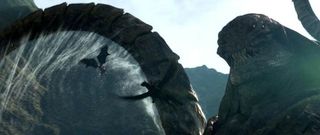
This re-imagining of the Harryhausen classic used CG to generate its titanic monsters, most notably the immense Kraken which wreaks havoc on Argos. To jump on the 3D bandwagon, the finished film was converted to 3D in post production, and the result was adequate at best; physically uncomfortable viewing at worst.
Toy Story 3
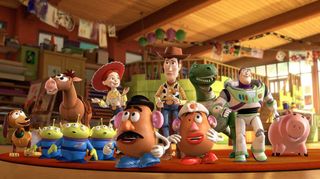
15 years after the groundbreaking Toy Story , Pixar wrapped up the trilogy with its biggest success to date, beating Finding Nemo , winning two Oscars and becoming the first animated film to gross over $1 billion worldwide. It was made in various 3D formats including IMAX 3D, and was the first film to be released theatrically in 7.1 Surround Sound.
Hereafter

Clint Eastwood’s tale of near-death experiences features some flawless CG visual effects by Scanline VFX, when a tsunami devastates a small Thai village. Scanline used its proprietary Flowline simulation software to create the water. The team LIDAR’d the entire street so that they could replace it completely with CG elements and be able to match them perfectly with the lighting of the real location. People caught in the deluge were a combination of footage filmed in a tank at Pinewood Studios and motion-captured digital doubles shot at Giant Studios and animated with MASSIVE and MotionBuilder. It’s an impressive and chillingly realistic vision of this all-too frequent natural occurrence.
Tron: Legacy
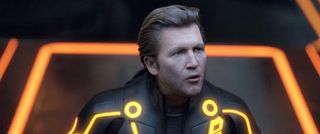
Tron: Legacy ’s über-stylish production design may not be a suitable homage to the abstract vision of the original, but it is a tour-de-force of the art of CG, courtesy of Digital Domain. Notable inclusions are sort-of-successful youthenising of Jeff Bridges (based on the work DD did for Benjamin Button), and the scope of the CG sets – all of which featured transparent, reflective and refractive surfaces and had to be rendered in stereo 3D photorealnearly bringing the studio’s pipeline to a grinding halt.
2011
Mars Needs Moms
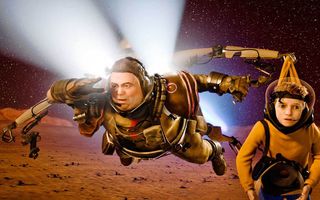
This Robert Zemeckis-produced take on the popular American book, was created using the same performance capture and CG animation techniques as previous Zemeckis outings, such as Beowulf and A Christmas Carol . But despite the flashy, kinetic CG, a crowd-pleasing voice cast, and a family-friendly plot, the movie bombed. Badly. With a production and marketing budget of $175,000,000 (!) and worldwide gross takings of just £39 million it currently resides fifth in the list of biggest cinema flops of all time. With 2011’s Green Lantern also hovering at number 11 on the list (net loss of $105 million – ouch!), it wasn’t such a great year for big-budget, CG-driven blockbusters.
Rango
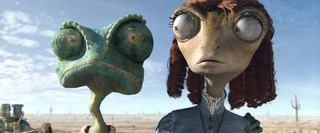
In a sea of hyper-kinetic cartoon CG animated movies, Gore Verbinski’s Rango is distinguished by its grungy, photorealistic style. It also marks the first time that ILM, ostensibly a digital VFX company, turned its significant muscle to the creation of a full-length animated film. To give some sense of the scale of these productions, ILM’s renderfarm consists of 5,500 processors plus 3,000 desktop systems that are brought online at night when people aren’t using them, and the film required 371 terabytes of storage.
Harry Potter and the Deathly Hallows Part 2
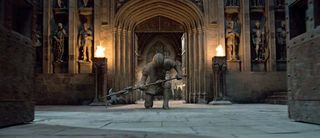
We’ve not included the Harry Potter franchise as specific films use CG to varying amounts and with varying quality (early CG Quidditch players are especially poor). Naturally, the overall quality of the effects has improved during its ten-year reign at the cinema, and the franchise has been a vital source of income for the London-based FX houses. The last cash cow in the seemingly never-ending saga includes some impressive stone knights that come to life, a burning Quidditch stadium, and a photoreal Dobby that’s widely regarded as one of the best CG characters committed to film, alongside the likes of Gollum. The Deathly Hallows part 2 was released in 3D (the only Potter film to do so), and wax the highest-grossing film in the series, breaking the $1 billion barrier.

Dave is a TV and film journalist who specializes in the science fiction and fantasy genres. He's written books about film posters and post-apocalypses, alongside writing for SFX Magazine for many years.
